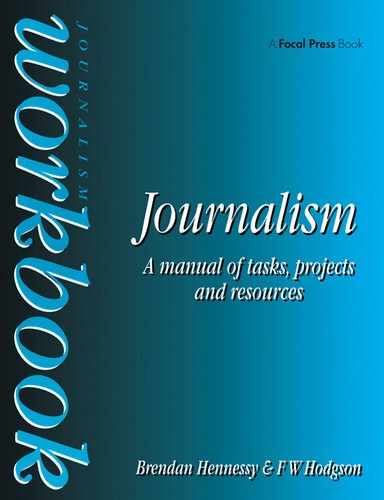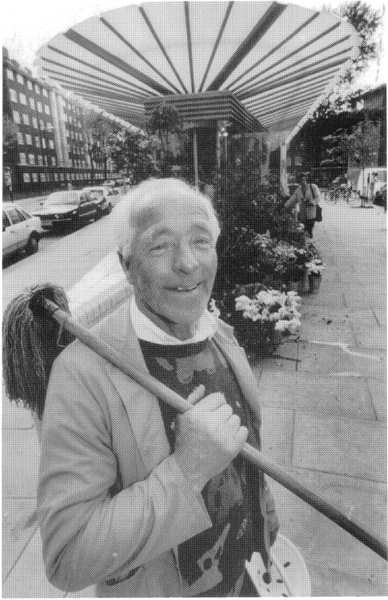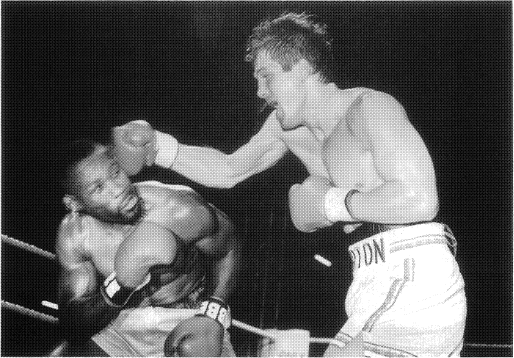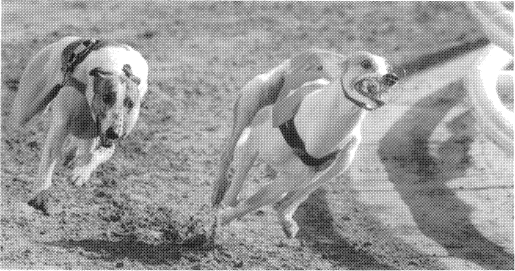4
Photojournalism
IT IS not possible to teach press photography exlusively in the classroom; there comes a time when the student photographer has to be allowed out into the real world and let loose on real people and on situations which, if simulated, should be as near to real news or features situations as possible.
How much can be achieved depends on the size of the class and on the relationship between course instructors and whatever facilities are available locally.
For example, the police would not be too pleased to find a dozen budding press photographers arriving at the scene of the first murder to occur in the area since the local course in press photography started. On the other hand the police district’s press officer would probably be willing to come to talk with students about the relationship between the press and the police, and they might be able to offer the course occasional special facilities — for instance photographing public order demonstrations or firearms training for officers.
For many assignments a little role-playing will have to be used with other students or lecturers as guinea pigs acting out the parts of authors, inventors and grieving relatives. On some assignments — of which examples follow in this chapter — students wil be working alongside one another in a competitive environment, vying to produce the best picture of an event that has been set up. In others they will be working one-to-one with their subject to get the best result out of their equipment and their briefing.
Taking pictures, of course, is not the end of the job. Students need to be attuned to the technical side of photography — the skills of developing and printing in black and white and in colour, and in the transmission, storage and retrieval of their work and the procedures of picture editing for the page.
They have to develop the organizational skills of liaising with writers, meeting deadlines and anticipating the needs of the subeditors and production journalists who plan and lay out the pages. Very important: they have to remember to check and verify the contents of their pictures so that they can deliver up accurate captions in which people are correctly identified and named. These are journalistic skills without which they cannot do their job properly.
Depending on the course timetable some aspects of press photography may have to be introduced into the classroom environment artificially. For example, a practical assignment might be photographed in one session and processed, captioned and offered to a notional ‘picture editor’ in a subsequent one.
As well as producing their finished printed work, students should present a full set of contact prints and their notes so that they can be referred to in subsequent discussion about their train of thought during their picture-taking session. Such things can show to what degree a student or trainee photographer is learning correct methods and they can be valuable at the assessment stage.
The assignments that follow are intended to help in the training of press photographers by setting up models of the sort of jobs a young practitioner might be called upon to do.
 Assignment 1
Assignment 1
Your paper has received an embargoed press release from the local council that the public conveniences in the town’s market place have been made a ‘listed building’. They are believed to be the first loos in the country to have been granted this status. The press release gives a telephone number for the council’s head of environmental services. The picture editor is asked by the editor to arrange suitable coverage.
Points to check:
1 That you have taken pictures in both horizontal and vertical format.
2 That you have checked your caption names with those in the story.
3 That the embargo time/date is clearly marked on your caption.
See Keene: Practical Photojournalism (Focal Press, 1993), pages 139– 40.
Not all assignments are as straightforward as the above. You might be asked to find pictures to accompany an idea for a FEATURE in which a good deal of research will have to be carried out and work done at a variety of locations. The following is an example.
 Assignment 2
Assignment 2
After meeting the Chairman of the local branch of the Royal National Institute for the Blind at a Rotary Club lunch, your editor decides to run a double-page spread of pictures on the problems facing disabled (not just blind) people in the circulation area. You are assigned to the story by the picture editor and briefed on what is needed. You are asked to liaise with a reporter who is setting up the text, bet are told the choice of pictures is down to you.
There are various routes to pictures. The local chairman of the RNB will be able to offer some ideas. The names of other local organizations for the disabled will be be available from the public library and, with some reservations, are usually willing to take part in projects that publicize their cause.
As a student, you may choose to highlight problems faced by people with a wide range of disabilities, or you could work with a few subjects and concentrate on the size of the problems facing them. Aspects could inclyde dangers in the streets to the visually handicapped and problems of access to buildings and public facilities to people in wheelchairs. In either case it might be necessary to use stand-ins as subjects.
Points to check:
1 That you have submitted complete contact sheets to show how you have gone about taking the pictures.
2 That your have shot the pictures in a variety of shapes from which to select your six best.
3 That you have used a selection of lenses.
PERSON SHOTS are one of the less complicated jobs. Given that the person is agreeable and that a proper arrangement has been made, a photo-grapher — even a trainee photographer — working on their own should need just one roll of film to come away with a selection of good pictures
 Assignment 3
Assignment 3
A professor of astronomy at a nearby university has a star named after her in honour of her work on Black Holes. You are asked to produce pictures to accompany a story that a reporter on your evening paper is writing about her.
The ORGANISING of camera work is one thing a press photographer has to learn to cope with. Photo sessions have to be set up, appointments made, equipment checked, photo files kept, photo libraries searched for stock pictures and work co-ordinated with reporters on many of the stories. A spell of work on the picture desk will give a young press photographer a timely reminder of this aspect, as the following assignment demonstrates.
 Assignment 4
Assignment 4
Your local league football club is travelling to a club 200 miles away in four days’ time to take part in a play-off which will decide if they are to be promoted to a higher league. You regularly cover the team and on this occasion you have been asked to produce six pictures of the game, but since they are needed in your office two hours after the final whistle for your evening paper’s late edition there is not enough time to bring the films back to the office for processing.
SHOPPING is part of the lives of a family readership on a local evening paper — and part of the advertising manager’s plans for revenue — and it inevitably provides subjects for pictures.
 Assignment 5
Assignment 5
It is the first day of the January sales at Dumbles, the town’s largest department store and one of the paper’s biggest advertisers, and the editor and the advertising manager want to ran a picture on the front of tonight’s edition and two more in the early edition tomorrow. The store opens at 9 am and the editor needs today’s picture by 10.30 am.
TASK 1 |
Take a selection of pictures typifying bargain-hunters or any odd aspect of the sales from which the best three will make the paper. |
TASK 2 |
List the sort of ideas for pictures you will be on the look-out for. |
Notes: This is an old chestnut for local papers but nearly every year something new will crop up. Some amazing object someone has longed for and has got at a knockdown price…someone who has camped outside the store all night in a shelter made of copies of the local paper…a bride-to-be rushing home on the bus wearing a wedding dress she has just bought. It is also a picture assignment actuality that is available to student photographers without recourse to stand-ins. Store managers are always glad of the publicity, and you might even be able to sell a good picture to the local paper — or its rival. Getting the picture takers and printed for the 10. 30 am deadline is a good exercise. It is better to have an acceptable picture delivered on time than a brilliant one a student photographer has waited all day for that is too late. There is always the following day’s edition for the others. |
Once you have most of the routine assignments safely under your belt you might find yourself lined up for one of the plum jobs — particularly if holidays and illness have produced a dearth of photographers in the picture department. It helps if the potential picture is an exclusive that you have uncovered yourself.
Through a local newsagent contact of yours you learn that Oleg Propov, a former KGB agent who defected to Britain and worked for five years as a double agent, is living in a secluded house in your area. His front door is some hundred yards from the nearest road but the newsagent tells you that the ex-double agent and his wife enjoy an occasional cycle ride in the countryside. You are asked by the picture editor to go along and get a picture to go with a reporter’s story:
FASHION PHOTOGRAPHY is a specialism that may lie some time in the future for the ambitious student photographer but the seeds can be sown by an assignment on your first local paper.
Despite the ‘liberating’ of the traditional women’s pages in many newspapers, fashion in clothes, jewellery, etc. remains an ingredient that not only, according to surveys, has a significant reader interest but can provide attractive pictures for pages on an otherwise flat day.
Fashion pictures need to be eye-catching. The settings can add as much to the pictures as the clothes. Evening wear would look ideal shot at the local five-star hotel, bet daring outdoor shots can look good provided the light is right. Denim ‘working clothes’ could be photographed in a breaker’s yard.
The local high street multiple stores are less likely to help in student set-ups than the smaller boutiques who may not only lend clothes for the session but also a member of the staff as a model. Do not ignore ideas from college students on the local fashion or design course. Theirs may be very innovative.
 Assignment 7
Assignment 7
The women’s editor of a magazine wants to brighten up the pages with some fashion pictures showing trends in spring casual wear. You are given wide scope in interpreting the brief.
TASK 1 |
Produce a set of pictures with a number of backgrounds from which four could be used as the basis of an informative caption story. |
TASK 2 |
Assuming that an interpretative caption is going to be written by an informed fashion writer, list the sort of information you, as the photogropher, would expect to have to supply with the pictures. |
Notes: Fashion pictures should, in the first instance, be technically perfect. Focus must be spot on, with distracting backgrounds subdued with a longer lens set at a wide aperture to give a shallow depth of field. See Keene, pages 111 – 12, on fashion work.
1 If a particular boutique has helped you, give them a printed credit, even though the pictures are for a student publication; they have earned it. 2 Likewise, readers may want to buy the clothes worn so give ‘ merchandising’ information about prices and outlets. A ROYAL VISIT to the area would be covered under the watchful eye of the Cental Office of Information both for the Rota party (those with special passes), who move with the visitors, and for journalists operating independently at fixed points along the route. The latter tend to be photographing arrivals and departures at each end of an engagement -at airports or railway stations for example — or taking shots during a walkabout Access to students for Rota passes is impossible for such occasions but if there is a good relationship between the course authorities and the CoI the office may make available some fixed point passes for a visit. |
 Assignment 8
Assignment 8
You are lucky enough to have been given a fixed point pass at the local sports ground where Princess Margaret is arriving by helicopter for the first of two local functions and your pictures are intended for page one of your student magazine or newspaper.
COURT COVERAGE is just as much a legal minefield for the photographer as it is for the reporter and a close study of the relevant parts of McNae (Essential Law For Journalists) and Crone (Law and the Media) on reporting restrictions, contempt of court, libel and confidentiality (see page 80) is recommended before embarking on any assignments to do with court appearances.
 Assignment 9
Assignment 9
Baron Oldchester, owner of the local stately home, who leads a lifestyle described by some as controversial, is to appear tomorrow at the borough magistrates’ court to answer drugs charges and the editor of your evening paper is keen to have a picture of him on the day for the main edition. The Baron is currently on bail after pleading not guilty at a previous hearing.
PICTURE EDITING
EDITING pictures is strictly a task that falls to the subeditor or production journalist in charge of the page who must decide how to obtain the maximum effect from the pictures chosen within the space made available for them, while at the same time taking into account the purpose for which they were selected. The title picture editor is usually given to the person who runs the picture desk, organizes the picture service for the paper and briefs the photographers.
Planning the pages and choosing their contents is a function that the editor delegates to a top executive such as the night editor or the chief subeditor.
As far as the picture content goes, the main one might be chosen for the page in its own right as a piece of picture news — a Royal portrait, a seasonal or Christmas scene, an ususual activity, a weather picture or a pretty girl modelling topical clothes. Or a picture might be of someone mentioned in the story alongside. Within these parameters the photographer’s print might turn up as a five column by 20 centimetres deep or as a single column head or ‘mug’ shot.
Perhaps only part of a picture is wanted for the purpose of the page, or a particular section of a picture needs to be enlarged or ‘blown up’ because of something it shows, or someone or something in the background of a picture needs to be excluded because it is not relevant to the editorial purpose. All these requirements are met by the various processes of picture editing carried out by the person in charge of the page Unwanted or intrusive background can be ‘blown back’ to instructions by an artist retoucher using an air brush on the emulsion or, with electronic page make-up when the picture is being ‘ scanned’.
The wanted part of a picture (and its shape) is selected for enlarging by a process known as ‘cropping’ in which usuaiy pencil lines are drawn on the back of a print boxing in the required part (see Figure 11).
The size of picture required for the page is indicated by a process known as scaling in which measurements based on the square of the diagonal of the cropped area on the back of the print take the picture either up or down in size proportionately.
In screen make-up systems in which a good deal of colour is used pictures are stored digitally and are colour-balanced and ‘imaged’ directly into on-screen pages, the same editing processes being achieved electronically by keyboard and ‘mouse’ controls.
Useful insights can be obtained by photographers, however, by a close study of picture use in their paper and of the mechanics and purposes of picture editing.
See Hodgson: Subediting, 2nd Edition (Focal Press, 1993) pages 56–74 for more on picture editing techniques.
Take a set of one day’s national daily papers and use them for the following tasks:
TASK 1 |
Work out (by the way the same picture recurs, for example) which are taken by the paper’s own staff photographers, which are distributed to all papers by ‘wire’ services (Reuter and PA) , which are stock (old) pictures and which have come free from public relations firms and press officers. |
TASK 2 |
Select those pictures which are common to, or similar in, a number of the papers, consider the differences in cropping, scaling and projection, and say why you think these differences have occurred (editorial purpose, readership influence, etc.). |
Notes: Student photographers can learn from a close study of the use of pictures in a variety of newspapers, identifying both common factors that apply to many papers, and oddities and idiosyncrasies that apply to the few. They will also learn that editorial purpose is the extra dimension that even the most skilled and experienced photographers have to cope with — that, for example, there is no greater source of conflict than the reasons for cropping a picture. See Giles and Hodgson: Creative Newspaper Design (Heinemann Professionsl Publishing, 1990), pages 75–99 for picture use in newspaper design. |
 Assignment 11
Assignment 11
Examine a complete set of one day’s editions (check the number first) of your nearest evening paper and use them for the following tasks.
REFERENCES AND FURTHER READING
Crone, T: Law and the Media, 3rd Edition (focal Press, 1995).
Giles, V and Hodgson, FW: Creative Newspaper Design (Heinemann Professional Publishing, 1990).
Hodgson, FW: Subediting, 2nd Edition (Focal Press, 1993).
Keene, M: Practical Photojournalism (Focal Press, 1993).
McNae, LCJ: Essential Law For Journalism (Butterworths, 1992).





